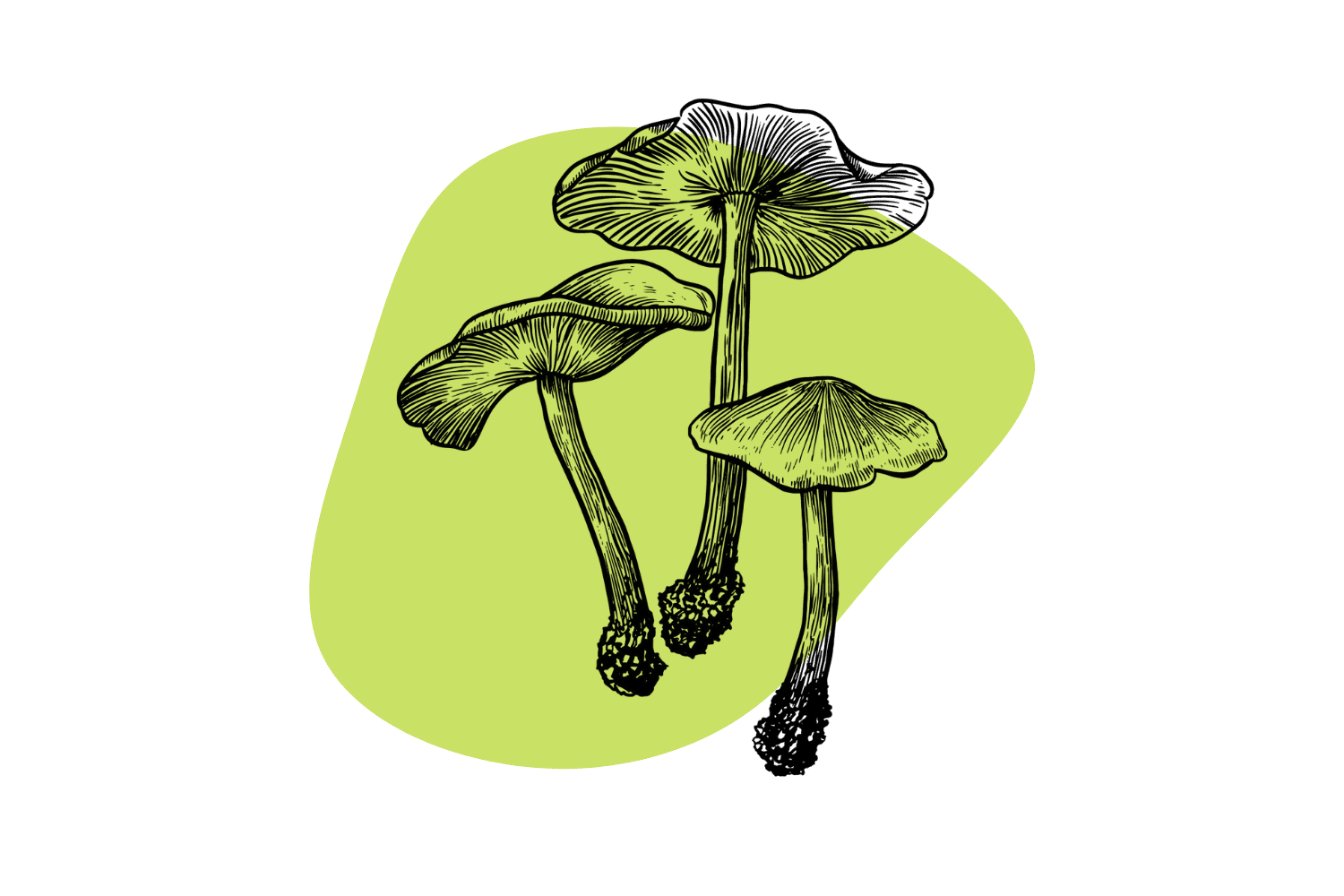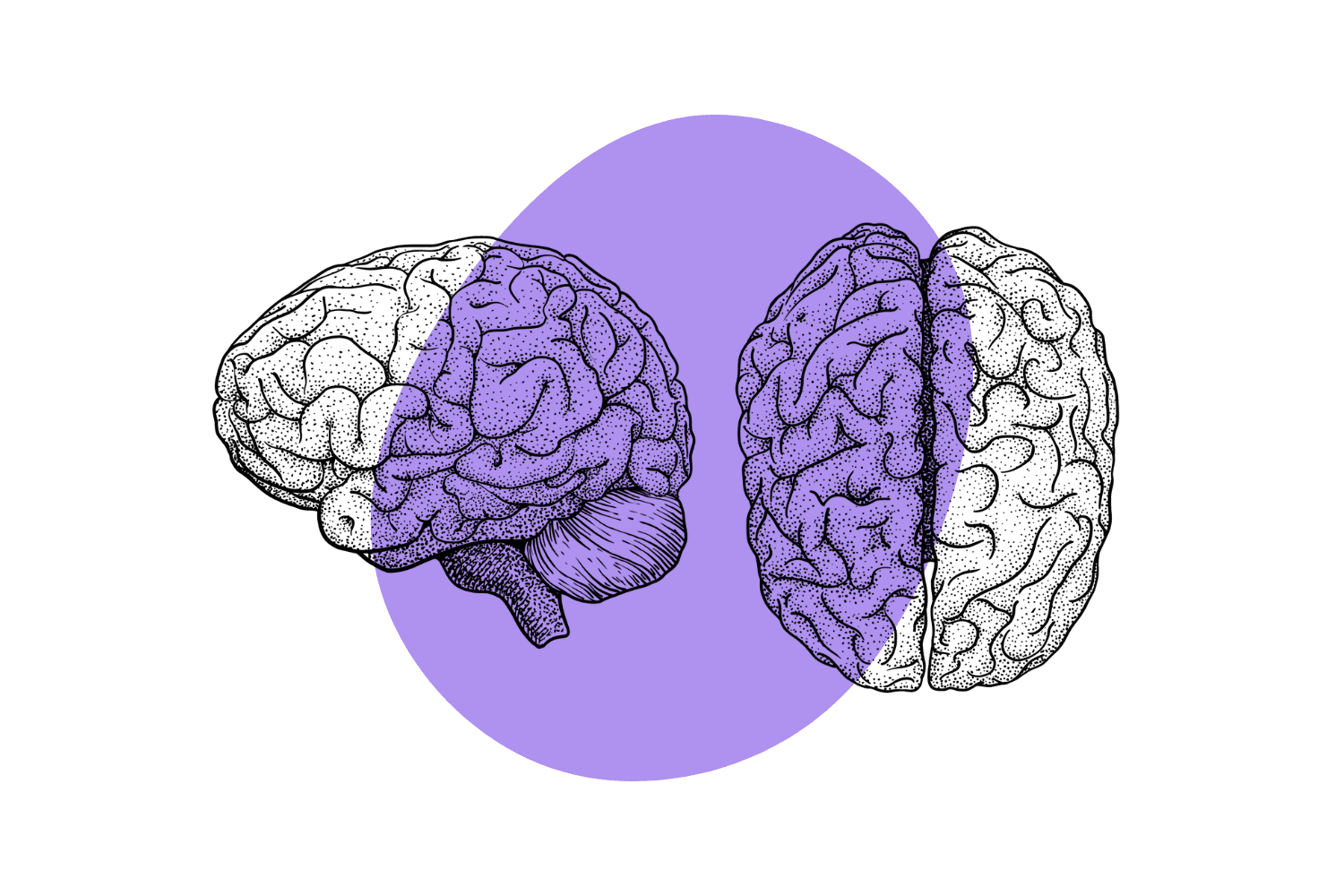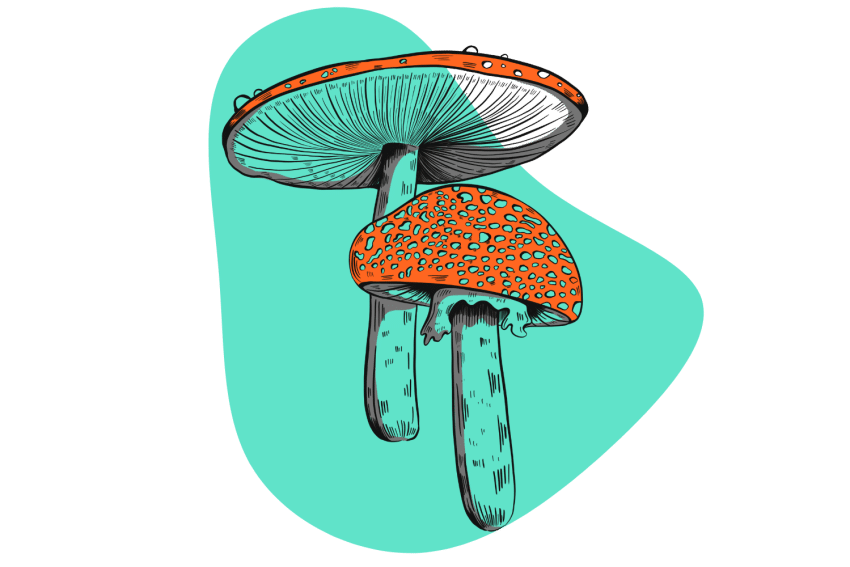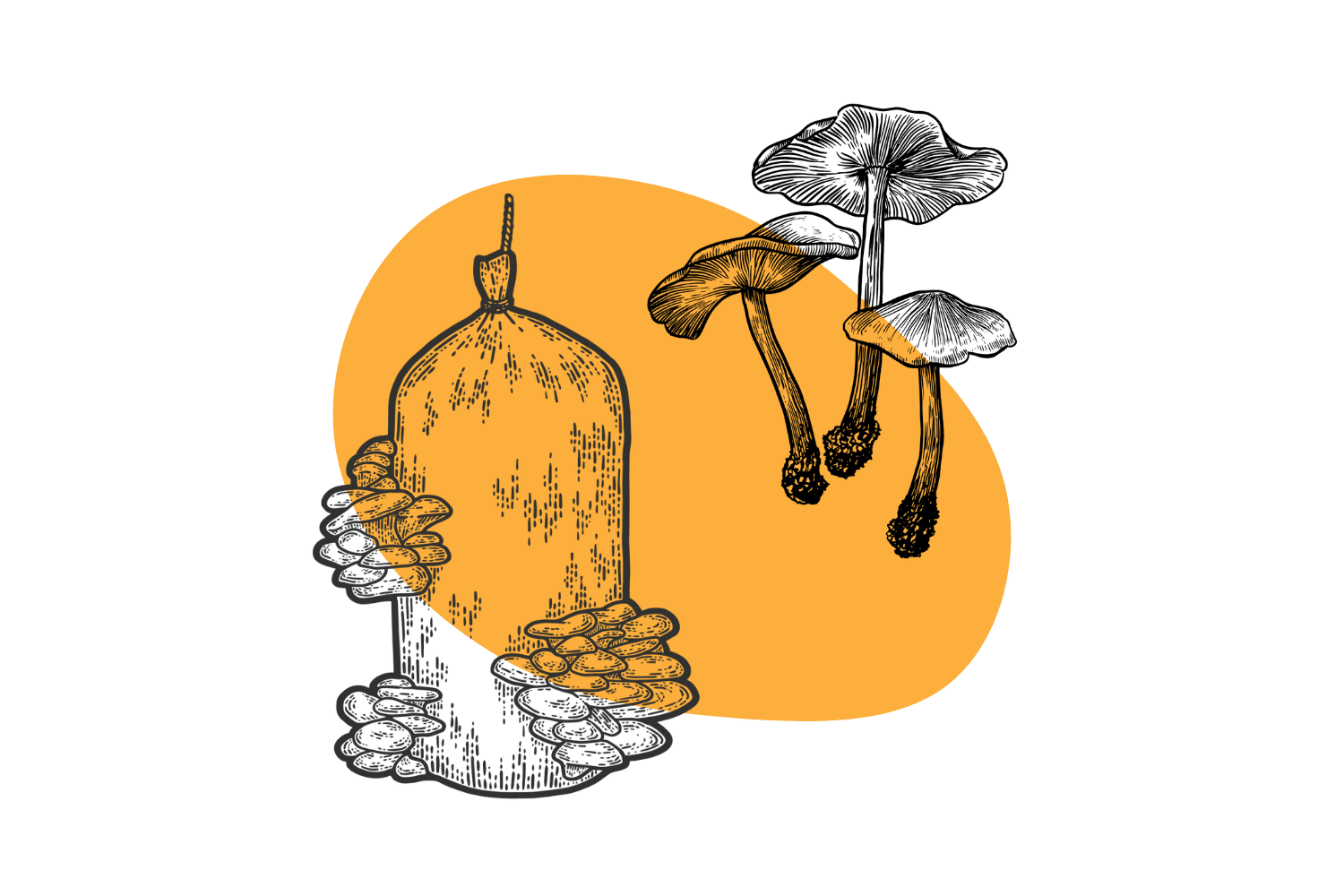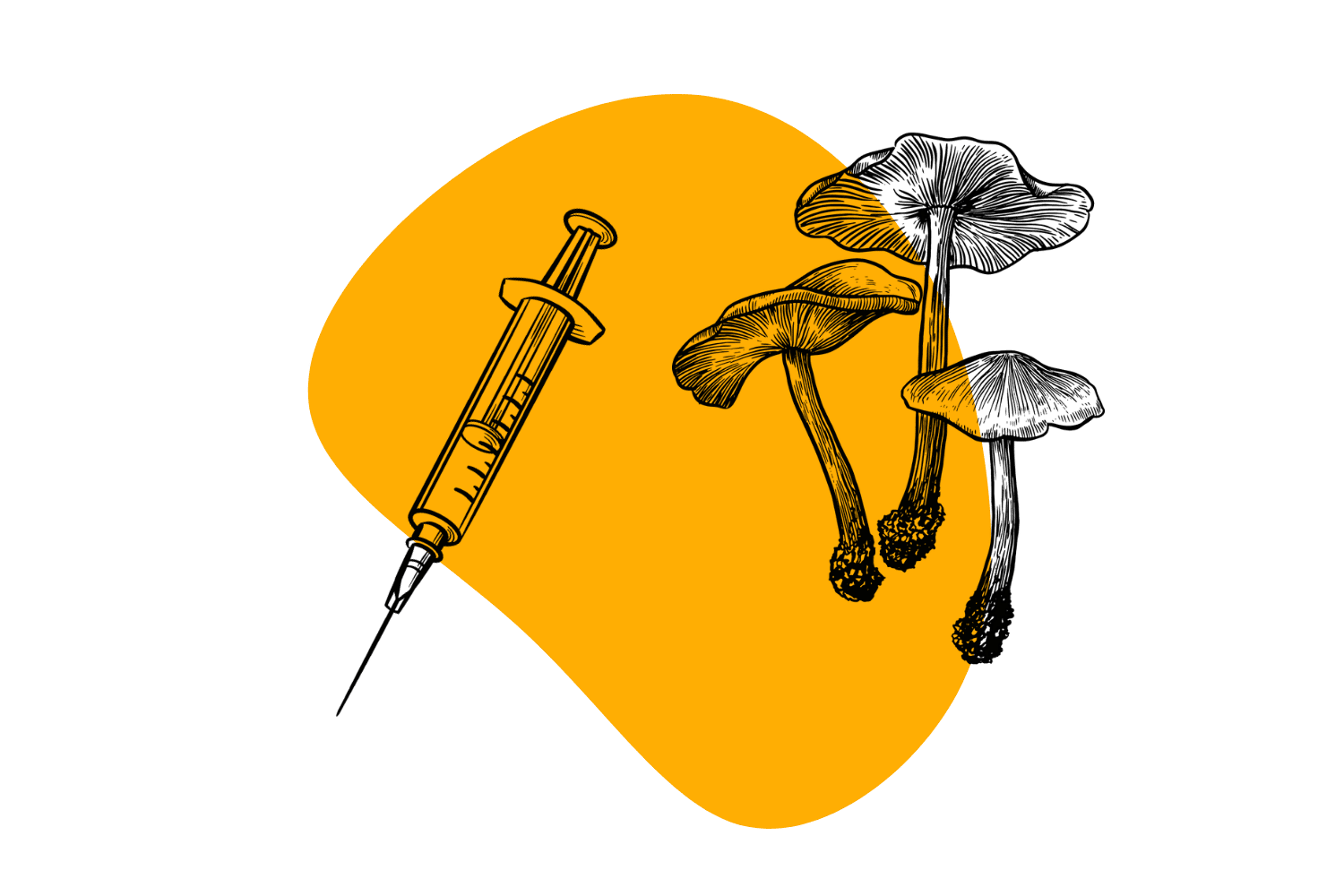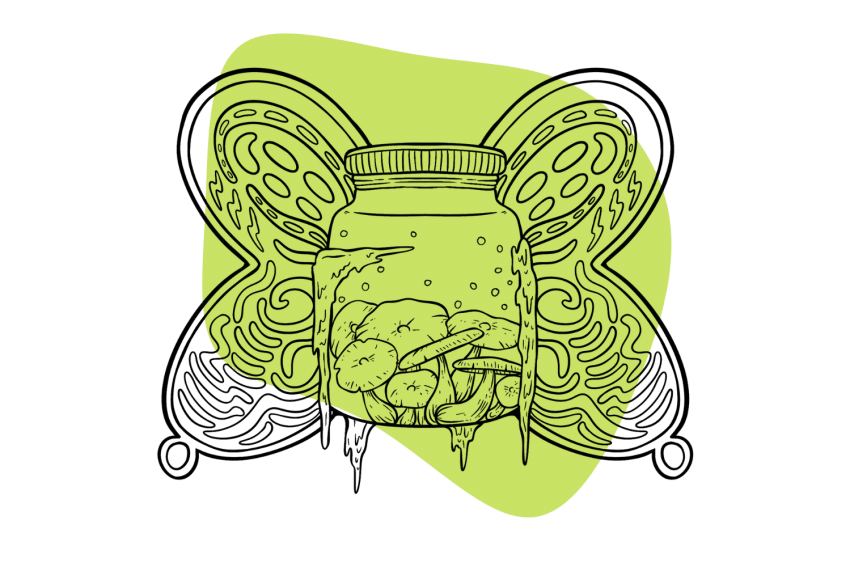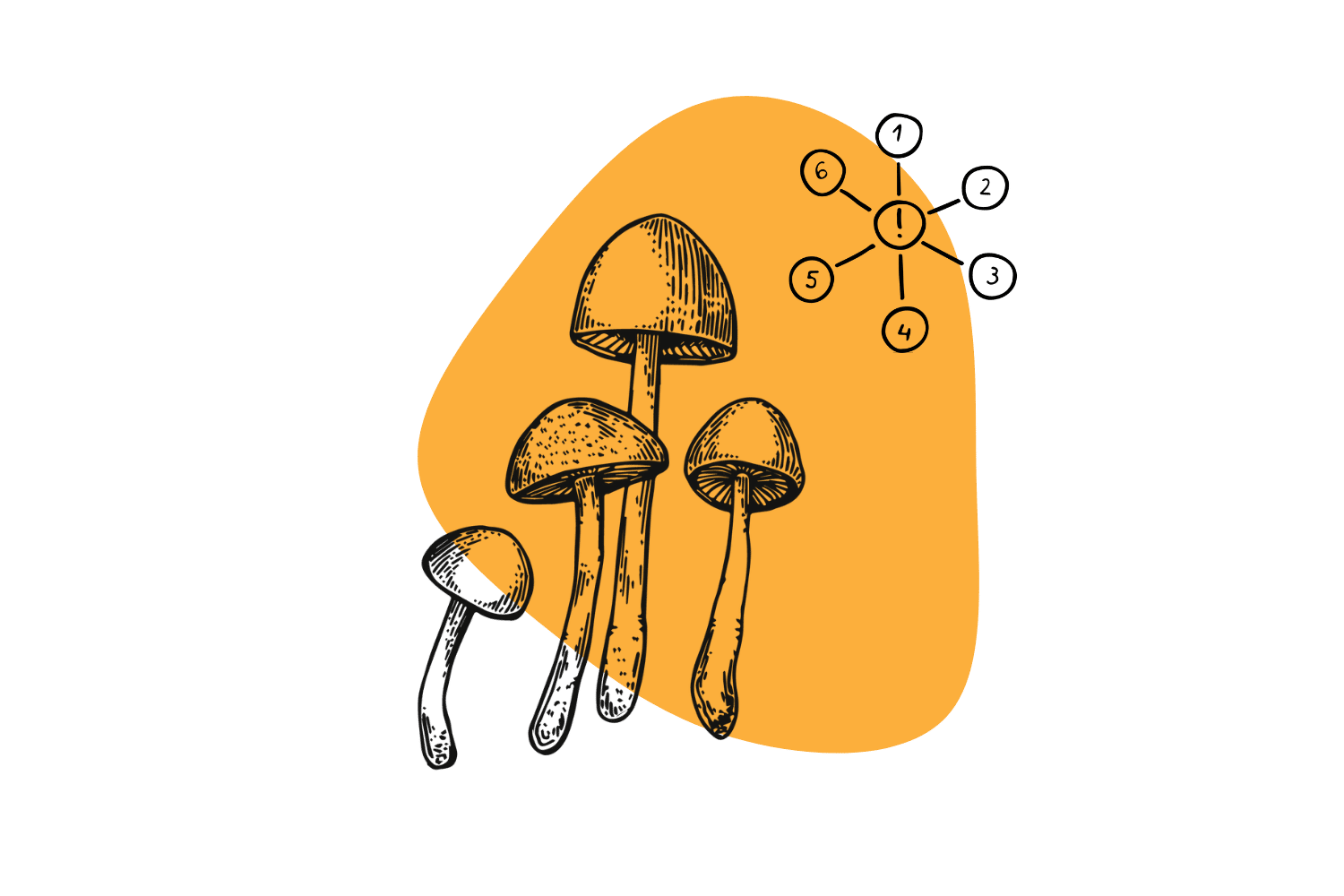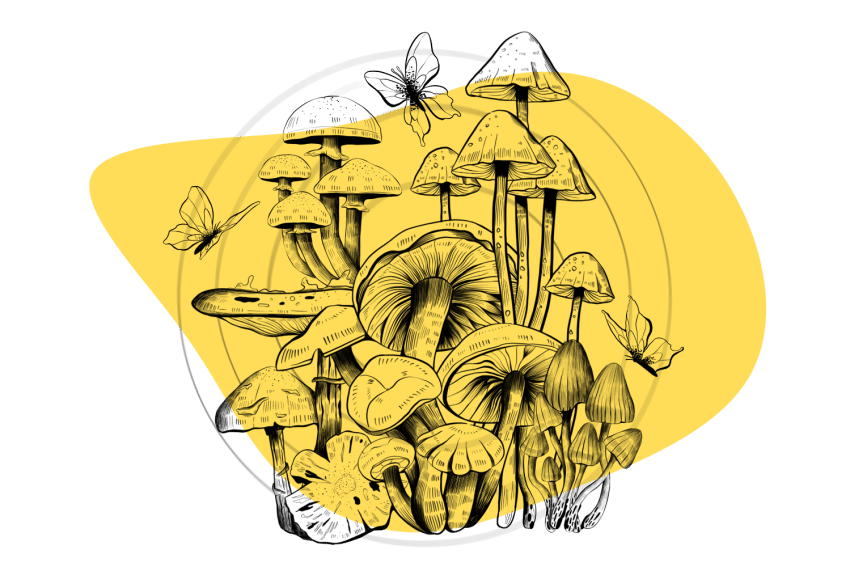Craft Breweries See Future in Mushroom Beers
Magic mushroom beer could be on the horizon 🌄.
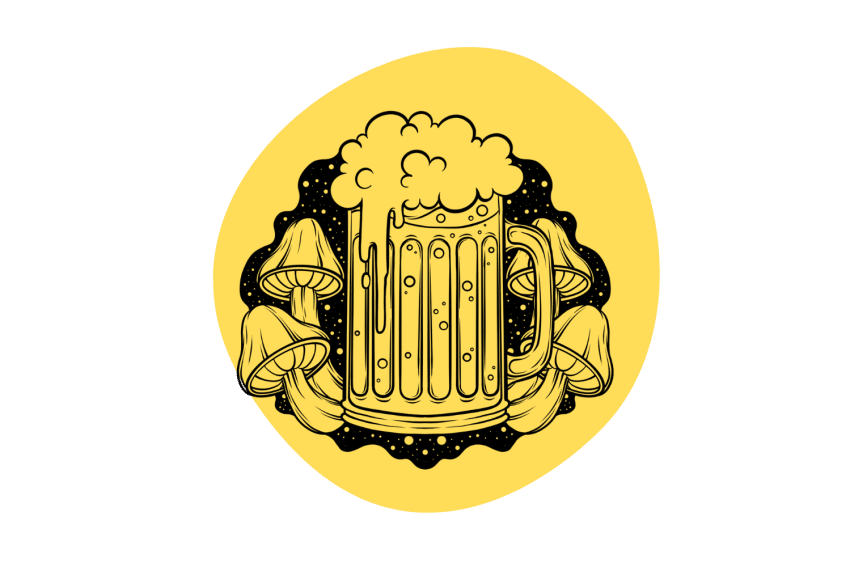
Evidence suggests the Chinese were drinking beer as far back as 7000 BCE. However, the Sumerians, who lived in the southern part of what is now Iraq, were credited with the first mass production of beer around 4,000 BCE.
Beer spiked with hallucinogens has its roots in antiquity. Archeologists have discovered evidence of them in beer dating back over a thousand years. Before the Bavarian Purity Act of 1516, it was common to add “magic mushrooms” and other hallucinogenic plants to beer.
In this article, we will focus on psilocybin-containing — or “magic” — mushrooms, along with other mushrooms craft brewers are adding to the beer.
In the end, we’ll give you tips on brewing your magic mushroom beer or how to even add some shrooms to your favorite “cold one.”
No Restrictions on Ingredients in Early Brew
Before Reinheitsgebot — or the Bavarian Purity Law of 1516 — it was typical for unscrupulous brewers to add unpleasant, potentially harmful ingredients to their brews as preservatives or flavorings. Some also included hallucinogenic plants in their recipes.
The Bavarian Purity Law — written by Duke Wilhelm IV and Duke Ludwig X, co-rulers of Bavaria — declared, “the only ingredients used for the brewing of beer must be Barley, Hops, and Water.”
Ingredients the law singled out as prohibited included:
- Gruit — Herb mixture used before hops for bittering and flavoring.
- Stinging Nettle — A Eurasian plant used for hundreds of years to treat painful muscles and joints, eczema, arthritis, gout, and anemia. Today, many people use it to treat urinary problems during the early stages of an enlarged prostate.
- Henbane — A Eurasian plant with naturally-occurring psychedelic compounds similar to datura.
- Psilocybin mushrooms — A common ingredient in beer production before the Bavarian Purity Law.
The law was officially repealed in 1986, but many German brewers still brag about their beer being “brewed according to the Bavarian Purity Law of 1516.”
Craft Breweries Give New Life to Old Profession
By the time the art of brewing beer had migrated across the Atlantic, the Bavarian Purity Act was no longer adhered to by most small, specialty breweries. These entrepreneurs formed the foundation which would come to be craft breweries.
Craft beer and breweries began popping up in the United States in the mid-1960s. According to a website dedicated to craft brewing, craft beer is “beer made in a traditional or non-mechanized way by a small brewery.” A craft brewery is characterized as one having an annual production of 6 million barrels of beer or less.
Craft beer usually tastes better than mass-produced beer because craft brewers commit more time to the quality of the product. Craft beer also frequently contains more alcohol, about 5 –10 percent alcohol by volume vs 3 – 5 percent alcohol by volume offered by major mass producers.
There are approximately 8,800 craft breweries in the United States. In 2010 there were only 1800. That’s nearly a fivefold increase in just over a decade, and the industry continues to grow exponentially.
Craft Brewers: David vs. Goliath
Most craft beer never leaves the region where it’s brewed. Many craft brewers can sell their beer only in their own pubs since most states prevent them from distributing beyond their neighborhood – if they’re allowed to distribute it at all.
The Big Four — Anheuser-Busch, Molson Coors, Constellation Brands, and Heineken NV — have a pretty tight grip on the market. However, the limited distribution may be a “blessing in disguise.”
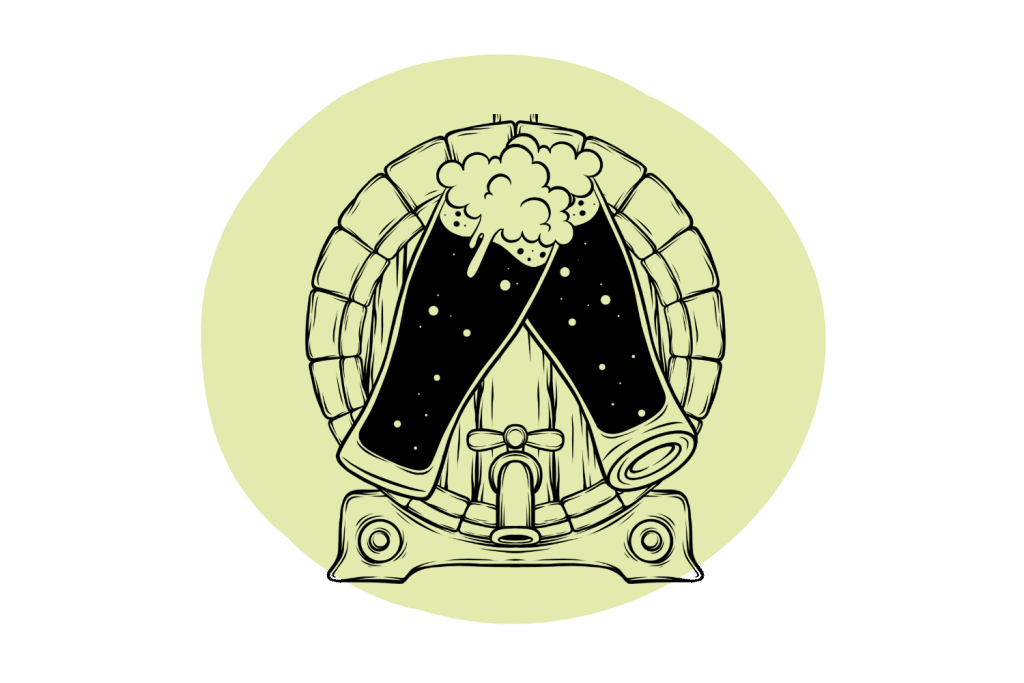
Craft Beers Have Unlimited Possibilities
The limited distribution certainly puts a damper on the sales of craft breweries, but it opens the door to unlimited opportunities to customize their brews. Craft beers have been experimenting with additives almost since the beginning.
Craft beer made its contemporary debut in the United States in 1965. This was when Fritz Maytag — the grandson of the washing machine magnate — bought the Anchor Brewing Company in San Francisco to save it from closing.
Anchor Brewing Company had a reputation for producing some pretty sour suds, so turning the failing brewery into a profit maker was going to require more than Maytag’s money. He had to come up with a special brew capable enough to compete with the mega breweries.
This struggle to compete birthed the craft brewing industry.
The success of Anchor Steam Beer, the first modern-day craft beer, inspired many others to enter the brewing business. Introducing the beer in 1965 and first bottled in 1971, Anchor paved the way for others to follow in its footsteps.
As of 2021, there are 9,247 breweries in the United States. 9,118 of them are craft breweries.
A Craft Beer to Suit Your Taste
Craft beer selections are extremely diverse. New ones are popping up practically every day to cater to a unique taste — or trend. The five most popular types of craft beer in the U.S. are:
- Lager — This is usually the first taste of beer new drinkers have. Most of the beers produced by the major breweries in the United States are also lagers. They are typically light and malty, without much variation in taste.
- Indian Pale Ales (IPA’s) — Covers multiple styles of beer that get their flavor profile from hops and herbal or fruity flavors.
- Pale Ale — American pale ale beer, inspired by its English counterpart, helped to set apart American craft beer from other nations’ craft beer with its big, bold American hops. It comes in flavors like citrus and pine and has a lower alcohol content than IPAs.
- Pilsner — Pilsners have a brisk, subtle flavor and a crisp bitterness even a seasoned brewmaster will find difficult to perfect.
- Stout Beer — Although the darker color of stout beer may give the impression of intense flavor, stout beers are sweet, full-bodied ales with a rich, strong taste reminiscent of coffee or dark chocolate.
Mushroom Beers Emerging as New Craft Favorite
In November 2013, Tröegs Brewery, an independent craft brewer in Hershey, PA, released an experimental, small-batch beer made with mushrooms. Although well-received and with something of a cult following, it is still struggling to gain momentum.
Struggles notwithstanding, the popularity of mushroom beer continues to grow and has picked up speed in the last couple of years. The first-ever mushroom beer brewery, Portabeera Brew, opened in Rhode Island in April 2021.
Although there are a few mushroom beers out there claiming to use magic mushrooms, there is no definitive proof that any mushroom beer on the market today contains psilocybin. There are also a few mushroom beers using the word “magic” in their name but they do not claim to contain psilocybin mushrooms.
Types of Mushrooms Used in Mushroom Beer
The mushrooms generally used to make mushroom beer are adaptogenic mushrooms. While they aren’t psychedelic, research suggests they do have some medicinal value.
The most popular adaptogenic mushrooms used in mushroom beer and their medicinal qualities include:
Lion’s Mane (Hericium erinaceus)
Clinical studies have shown Lion’s Mane to be beneficial in the prevention of conditions like Alzheimer’s and Parkinson’s disease. It also may improve memory, boost creativity, and improve mental clarity.
Turkey Tail (Trametes versicolor)
Turkey Tail mushrooms have a host of medical benefits. In addition to potentially inhibiting the growth and spread of certain cancer cells, they also have antibacterial qualities and may improve athletic performance.
Oyster (Pleurotus ostreatus)
According to clinical studies and trials, Oyster mushrooms are rich in nutrients, a great source of antioxidants, and may promote heart health by reducing heart disease risk factors like high cholesterol and blood pressure.
Portobello (Agaricus bisporus)
Portobello mushrooms are a good source of nutrients, including:
- B vitamins
- Phosphorus
- Selenium
- Copper
- Potassium
Portabello mushrooms also contain non-nutritive compounds which may have anti-inflammatory, antioxidant and cancer-fighting properties.
Other Options
Other mushrooms used to make mushroom beer include:
Reishi (Ganoderma lucidum)
In China, the Reishi mushroom is regarded as the “herb of spiritual potency, symbolizing success, well-being, divine power, and longevity.” It has been a staple of the medical arsenals in China, Japan, and other Asian countries for centuries.
Medical benefits attributed to the Reishi mushroom include control of blood glucose levels, regulation of the immune system, help prevent damage to the liver, prevents the growth of harmful bacteria, and more.
These various beliefs regarding the health benefits of Reishi mushrooms are mostly supported by unscientific evidence, traditional use, and cultural traditions. However, there have been recent scientific studies that support some of the ancient claims of the mushroom’s health benefits.
Porcini (Boletus edulis)
Studies have shown Porcini mushrooms have bioactive compounds and chemical extracts that protect cells against free radicals — which may play a role in heart disease, cancer, and other diseases.
Studies also indicate that compounds in Porcini mushrooms can reduce inflammation, protect against liver disease, and are effective in treating infections caused by viruses.
Shiitake (Lentinus edodes)
The Shiitake mushroom is the second-most cultivated mushroom in the world; the button mushroom (Agaricus bisporus) is number one. The popularity of this mushroom has increased tremendously in recent years because of its nutritional value and reported medical benefits.
Nutrients in Shiitake mushrooms include:
- Fiber
- Protein
- Vitamin B5, B6
- Zinc
- Folate
- Vitamin D
Shiitake mushrooms also contain many of the same amino acids as meat and can help prevent liver and heart disease.
Morels (Morchella esculenta)
One distinguishing characteristic of beer made with Morel mushrooms is that it will probably be the most expensive beer in the house. That’s because Morel mushrooms are extremely scarce and consequently very expensive.
Morel mushrooms have the highest amount of vitamin D of all the edible mushrooms. They are also rich in copper, iron, manganese, and zinc. Medical benefits include:
- Facilitates growth and development of bones and teeth
- Helps regenerate mucosa — tissue that lines the insides of organs and body cavities that is exposed to particles from the outside.
- Blood cell production
- Reproductive organ growth
Magic Mushroom Beer Is The Obvious Next Step
Although it is generally not a good idea to mix alcohol and drugs, with due diligence, it is possible to brew or mix psilocybin and beer with very positive results.
Benefits of Magic Mushroom Beer Over “Regular” Mushroom Beer
Magic mushrooms bring all of the documented health benefits of psilocybin, plus the psychedelic experience associated with magic mushrooms.
Psilocybin, the “magic” ingredient in magic mushrooms, has undergone several studies suggesting it to be a viable treatment for a variety of medical disorders. Among the most common of them:
- Chronic pain
- Depression
- Existential Anxiety
- Obsessive/Compulsive Disorder
- Post Traumatic Stress Disorder (PTSD)
Psilocybin For Treating Substance Use Disorder
Drinking to lower dependence on alcohol might seem like an oxymoron, but magic mushroom beer could help you do just that.
The aforementioned health benefits notwithstanding, the consensus among clinicians and researchers is that psilocybin’s best potential is for treating addictions. According to the Johns Hopkins Center for Psychedelic and Consciousness Research, psilocybin research has demonstrated it to be significantly beneficial as a treatment for people who suffer from cocaine, opioid, and alcohol addiction.
Brew Your Own or Mix It In
The two ways to experience magic mushroom beer are to brew your own or sprinkle powdered magic mushrooms in your favorite brew. If you elect to make your own, homebrew kits are available to facilitate the process.
Home Brewing Kits
There are some very good home brewing kits available on the internet, starting at around $50 for a beginner kit. They can cost up to several thousand dollars for more serious craft brewing enthusiasts.
Add Magic Mushrooms to Any Beer Recipe
There are also a lot of good beer recipes on the internet. You can transform any of them into magic mushroom beer simply by adding the magic mushrooms during the brewing process. Make sure to use a recipe from a trusted source and follow the directions precisely.
Be prepared to brew several batches as you strive to create the perfect blend of shrooms and beer.
If you are still deciding whether to take on the challenge of brewing your own, simply blend powdered mushrooms into your favorite beer.
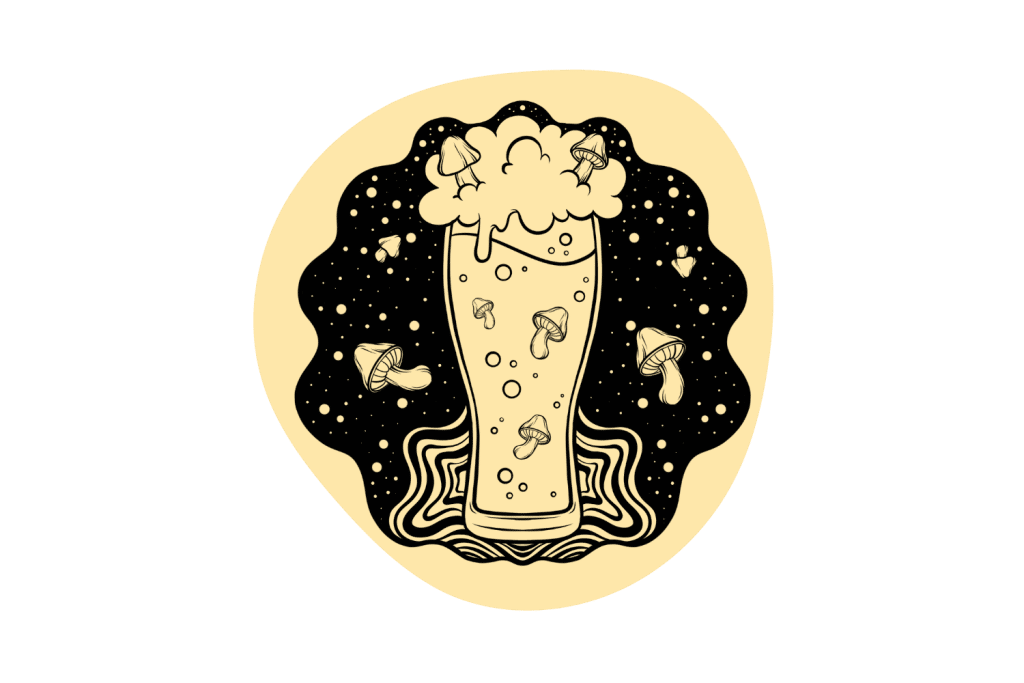
Is It Safe to Mix Magic Mushrooms and Alcohol?
Yes. If done properly. It is essential to begin with a low dose in your beer recipe or your favorite store-bought brew, and work your way up to your ideal finished product. Depending on the type of magic mushroom — there are about 200 species — a low dose is 0.25 to 0.5 grams.
Remember, psilocybin mushrooms were once a staple in beer before the Bavarian Purity Law.
Coming to a Pub Near You Maybe Sooner Than You Think
Although there are no publicized intentions by any current breweries to add magic mushroom beers to their product line, it is an idea whose time has come — again. With its potential to curb the desire for alcohol, magic mushroom beer may well be a perfect example of having your cake and eating it too.

